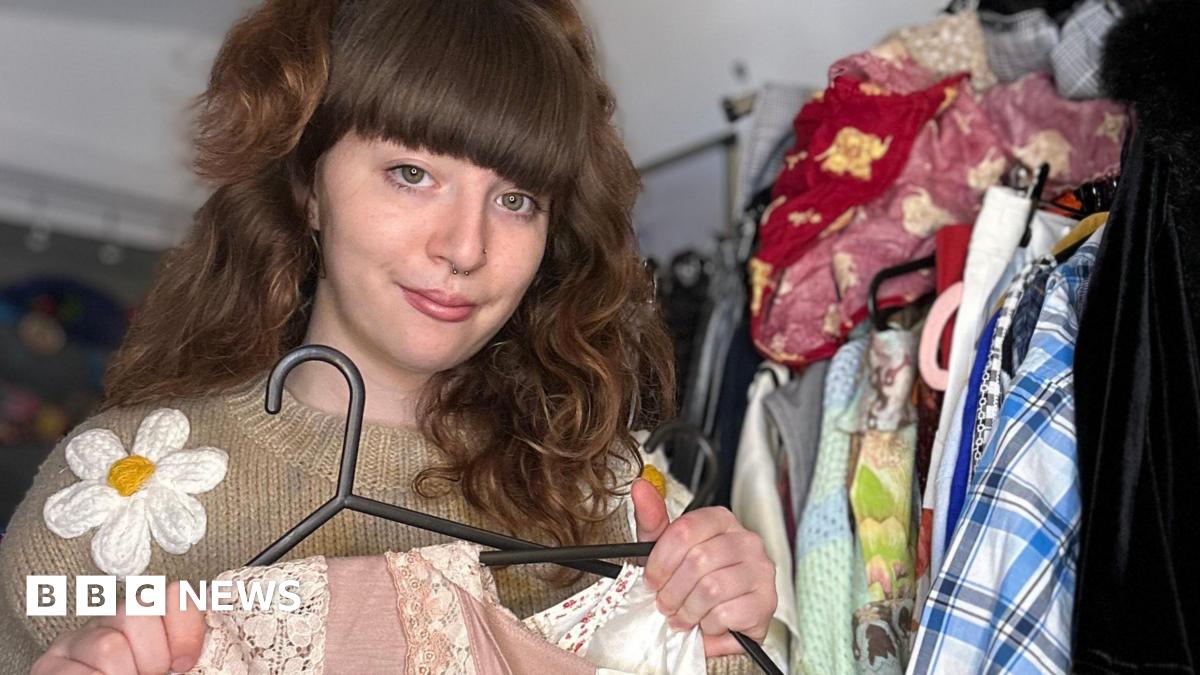Elsewhere in NYFW: 5000 and Meruert Tolegen

Published
February 12, 2025
5000: Bay Area Tailoring in the Lower East Side
5000, whose logo is written as Five Thousand, is the brainchild of designer Taylor Thompson, an Oakland, California-born gent who chose New York for his runway debut.
His hometown inspired this collection, especially the local Bay Area concept of “Bootsy,” a multifaceted term coined from Bourgeois, which can mean pretentious or uncool or alternatively bold and outrageous.
In Thompson’s hands, the result was a highly sartorial display of tailoring that combined elements of suave disco dragoon chic, banker style, and tie-dyed Carnaby Street cool.
Taylor played with the idea that “Bootsy” is a double-edged sword, with several passages where models would throw off cloaks, transforming them into plissé skirts to complement crisp suits. His best cut suggestions were elongated Nehru jackets, the great Indian revolutionary leader’s elegant gravitas fitting well with Bootsy’s concept of ownership of individuality.
As someone who once witnessed the most famous Bootsy in action, Taylor’s interpretation of the concept seemed light years away from the colourfully abandoned dress style of Bootsy Collins bass player James Brown and Parliament-Funkadelic. Yet, one sensed Collins would have approved of Thompson’s skills.
Thompson underlined his technical polish with reversed jackets, buttoned at the back, and sleeves cut off to show interior padding and horsehair. The models pirouetting gently in the late afternoon light were the best way to display the technique.
Staged on the top floor of Nine Orchard, a Lower East Side boutique hotel built inside a former bank, 5000 felt like a cool fashion statement among Manhattan’s madding crowd.
Meruert Tolegen: Buratino on Broad Street
Playful yet refined, naïve yet sophisticated, Meruert Tolegen’s latest collection manages to blend her youth in the former Soviet Union with her arty existence in today’s New York.
Meruert’s inspiration this season was a 1976 Soviet musical film, The Adventures of Buratino, the Soviet version of Pinocchio, based on a Tolstoy novel.
“The whole movie was actually theatre, and I wanted its sense of childlike mystery,” explained Meruert backstage.
Presented inside the Lehman Ballroom on Broad Street, across from the New York Stock Exchange, the location also evoked escapism as models marched by frescoes of giant ocean liners led into New York Harbor by tugboats.
Playful wanderers in the cast attired in huge cable sweaters worthy of Catherine de’ Medici, askew-pleated skirts, or off-kilter silk dresses printed with puppets.

Among the eccentricity were some great looks: a faded anthracite governess coat, asymmetric ruffled baby-doll dresses, or bold black jacquard bustier cocktail dresses—the kind of girl Buratino wants to date when he grows up.
The hairstyles were outlandish, taken from several figures with blue hair tied into wee knots. Too often, the film’s childish fantasies led to bizarre clothes, where the idea overpowered the look and the wearer. The names of certain Japanese designers began to tick over in one’s head.
That said, this was a moment of charm and some risk-taking ideas at a moment in America when a little fresh thinking would not go amiss.
Copyright © 2025 FashionNetwork.com All rights reserved.
Related
High street fashion giant to close 35 stores in just…
SelectFashion, the popular women's fashion retailer known for its affordable, trendy clothing, is set to close 35 stores within days, following a series of clo
Paris Friday: Victoria Beckham, Issey Miyake, Kenzo, and Róisín Pierce
One ranged from a gilded embassy or under the Louvre to an elegant br
Hillingdon woman adapts clothes to help neurodivergent shoppers
Ms Rule is a special educational needs coordinator at Douay Martyrs Catholic Secondary School in Hillingdon but works on her business in the evenings and at wee
British fashion creators accuse Chinese retail giant Shein of using…
British fashion is under threat from artificial intelligence that can identify popular products and flood the market with cheap copies, designers have warned.Fu












